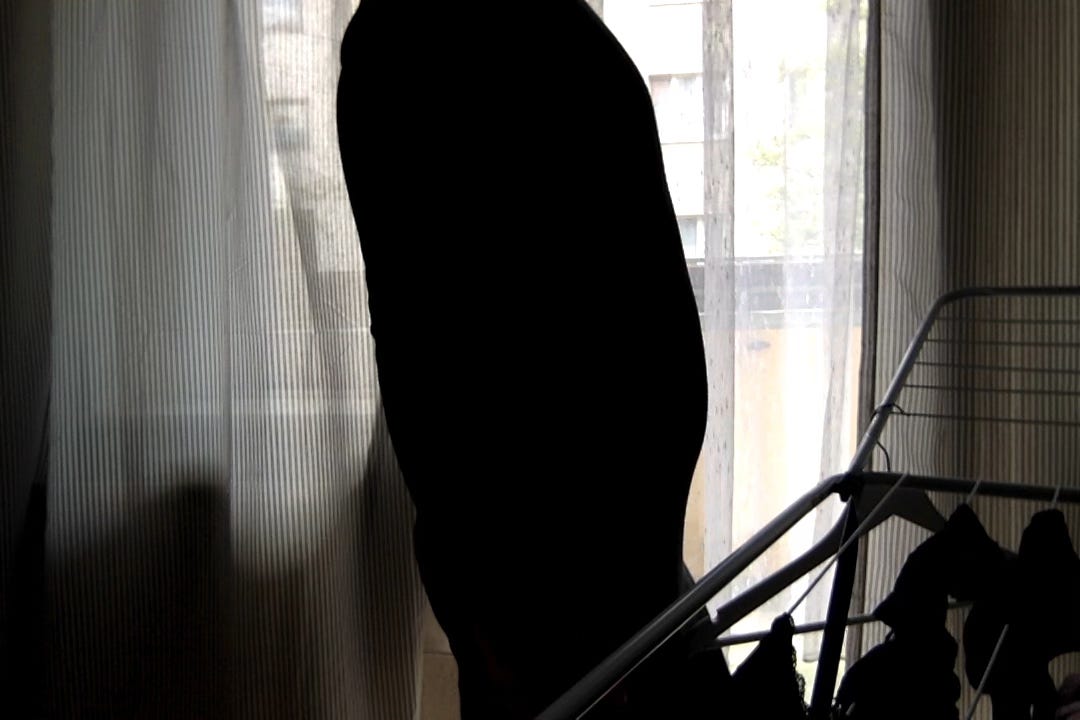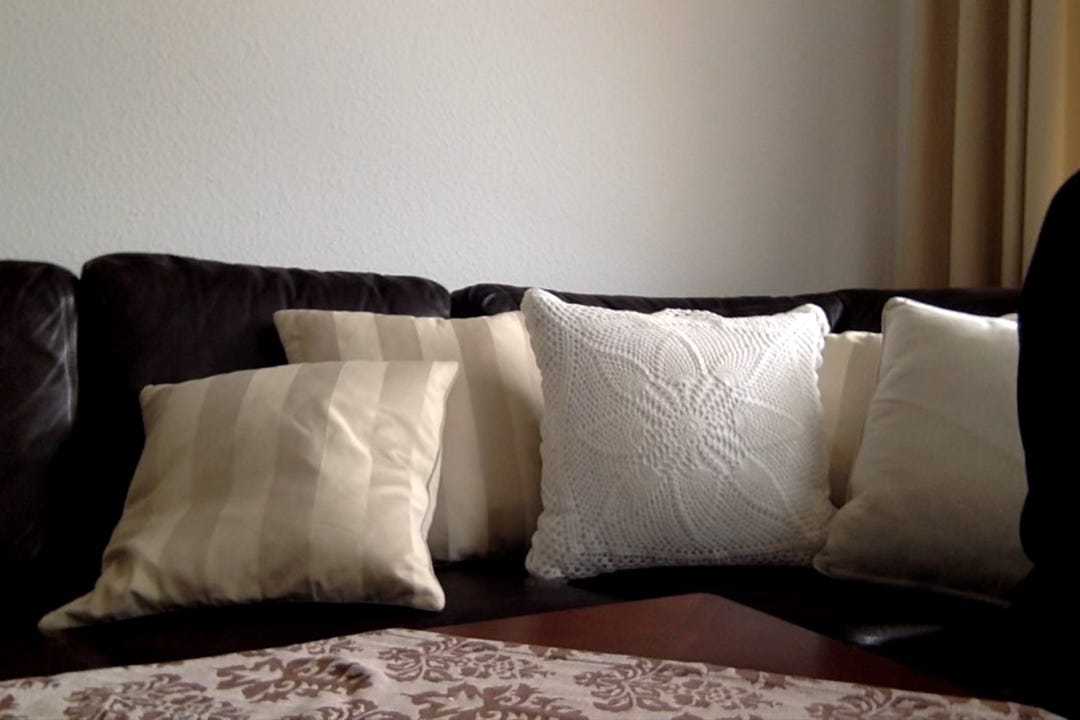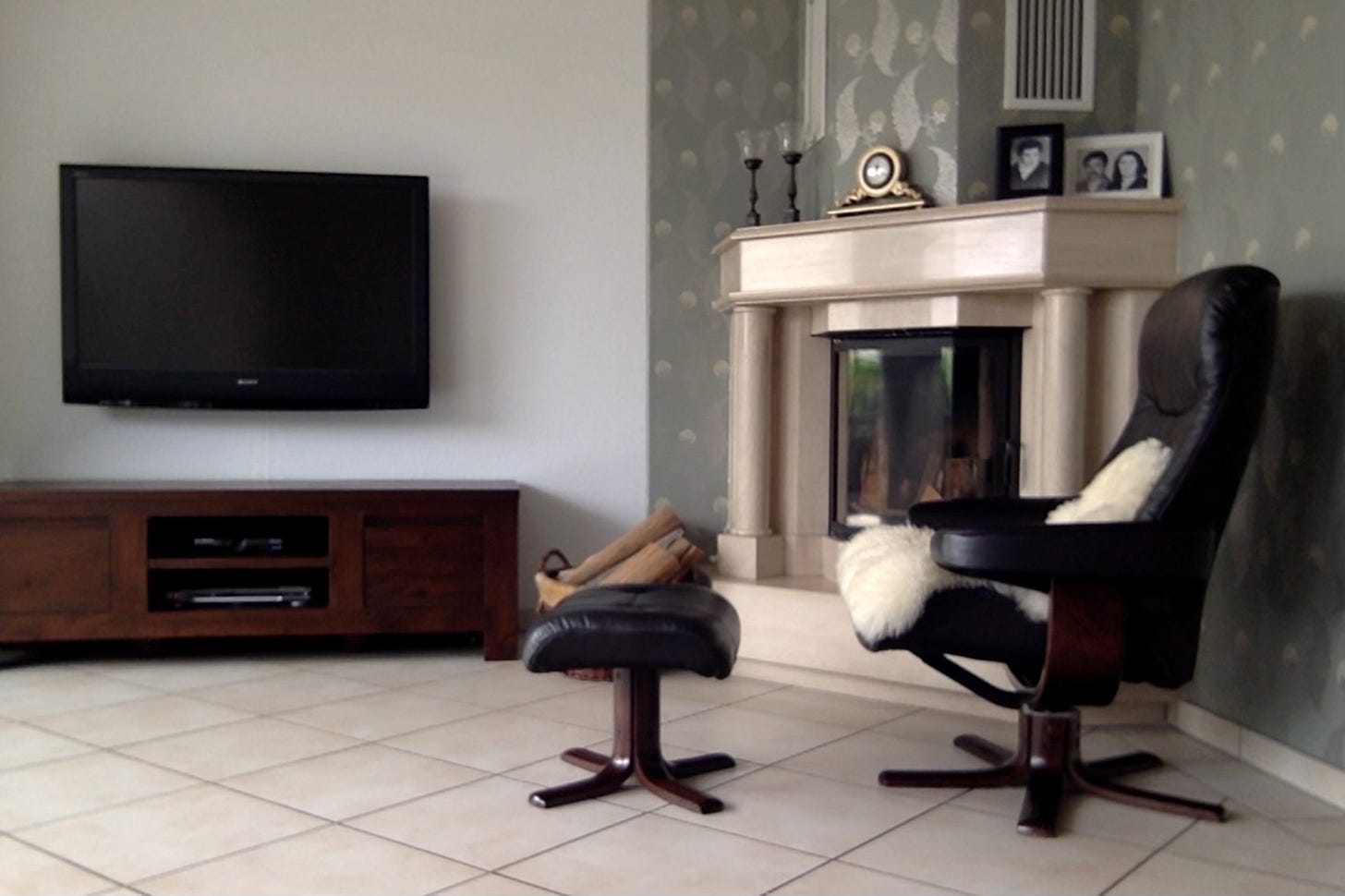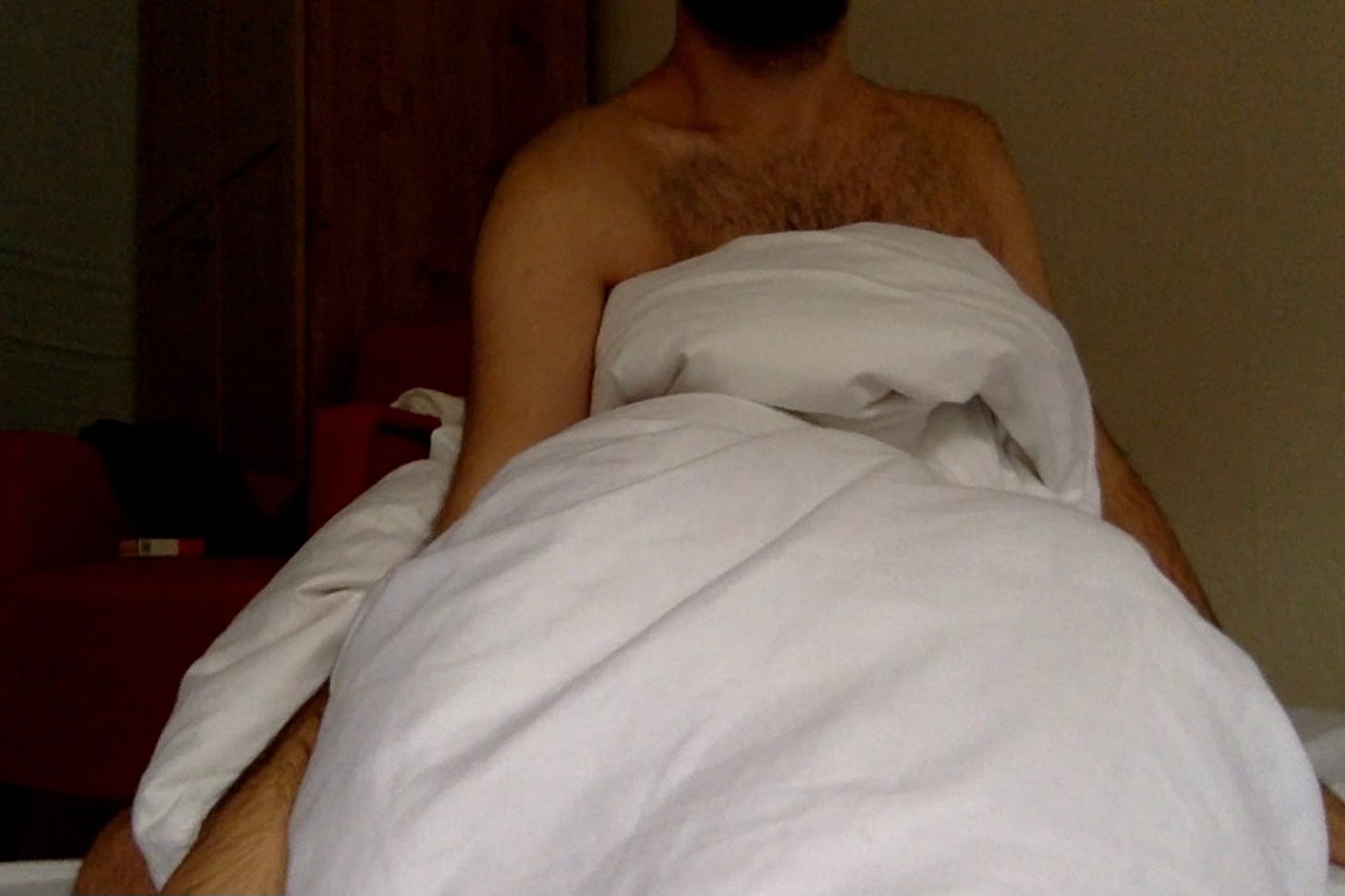A hot take on superficiality
Our appearance is very important, but not necessarily the way we usually think.
There is actually not one moment in my life, where I do not think about what I want to wear, how I want to look, how I think I am going to be perceived and at some point, I actually had to admit to myself that I absolutely care about how people feel towards me and what they think of me. It was just that I had to figure out when it is of importance and when it is not. This difference can be very hard to work out, because there are so many factors that play into how I feel in certain situations. Sometimes I know it is me, sometimes I feel like it is the other person. At the end of the day, does it matter? A feeling pops up, I feel it and it can overpower me to an extent where my rationale deactivates. And again, feelings come and go, but how do I internalise that feelings come and go? I have yet to figure it out.
At some point in my life I stopped buying and wearing polyester or acrylic textiles that directly touch my skin. There is something occlusive about synthetic fibres, it keeps the heat in. I have high blood pressure so I usually want to wear airy textiles. Especially when you sweat, I feel like synthetic fibres enhance your body odour. So I had to do a little research and found out that synthetic fibres are lipophilic, which means they love fat. Sweating not only brings out moisture but also oils. Bacteria, especially the ones that make your polyester piece stinky, like micrococci love oils. A research trial examining the odour of shirts worn by gym attendees after one hour of exercise followed by 28 hours of incubation revealed that 100% cotton t-shirts emitted a noticeably less unpleasant scent. Additional research and analysis confirmed a significantly higher level of bacterial growth in synthetic fibres.1 Especially during summer, when we all are sweating, I avoid wearing synthetic textiles. I mostly like to wear cotton, lyocell, viscose and especially cupro when it’s really hot, because it behaves like silk (stays cold). In one of
’s publications called You're focused on the wrong thing when you shop, she states several reasons on why you should wear synthetic fibres. I agree with all the points she is making though. The most interesting part of the post that stood out to me was:“You should consider fabric content in relation to your lifestyle and the purpose of each garment.” - Subrina Heyink
Lifestyle and purpose are so important when I think about expression and our bodies. To me lifestyle refers to the “look” of how a person lives: including their ritual, activity, diet, interests, belief, attitude and behavior. It encompasses various aspects of daily life such as how one spends their time, what they value, how they make choices, how they interact with their surroundings and how they define life. Lifestyle can be influenced by factors such as culture, socioeconomic status and environmental circumstances. Purpose then shapes the trajectory of our lives. To me purpose reflects commitment to something; what we live for. Our lifestyle kind of becomes a space in which our purpose is expressed. Whether consciously or subconsciously, our sense of purpose permeates every facet of our lives, from the relationships we nurture, the way we choose to dress to the paths we pursue. Purpose extends its influence beyond individual pursuits to encompass broader societal dynamics. When purpose is collectively shared, it can catalyse social movements, shape cultural norms and redefine politics, thereby influencing entire communities.
Transferring that to our body, the relationship between purpose and lifestyle invites us to live with either intention or indifference. Let me explain why I set up this binary for this argument. It becomes evident that our physical bodies also play a crucial role, because they serve as the vessels through which we navigate the world and how we care for them is linked with our sense of purpose and overall lifestyle. If I listen to the needs of my body, feed and dress it with intent, I actively engage in a conversation with it and invite other people to recognise my own view of my self. Every garment, its material, its color, its cut, its durability, its smell and its texture, I wear, sends a visual signal to my environment. I can either decide what and how to wear something, that I know will leave me feeling comfortable or I can wear something, with which I am indifferent about, that will leave me feeling comfortable. I don’t want to universalise intention and indifference, nor do I believe one is better than the other. My understanding is that if I would not dress with intention, I would leave room for interpretation that I would not be able to account for. I wouldn’t know the visual signals I am sending nor would I be able to communicate adequately without talking; sometimes I just don’t want to talk to anyone, so body language and an armour help with that. To me clothing is undeniably important for my self-expression, because with that I am able to develop a language to communicate on a more subtle note. If we were to look at uniforms for example, purpose and lifestyle are very clear. The uniform communicates that the person who is wearing it has a very specific role and task. The purpose of the uniform is therefore that the individual is unidentifiable. Uniforms can also provide safety, practicality and discipline you into subjugation (Police-State for example). When you go to a school that has a uniform, it’s probably supposed to unify and depersonalise everyone wearing it so you can concentrate on studying. The personal expression is invisible – which is obviously intended.
My video work “(to) conceive”, which I made for a videoart festival called “Videonale” in Bonn, is sort of an investigation of my body’s guise through a private, subjective and voyeuristic perspective. With different garments, different poses & gestures, all headless, except one scene, and still shots of interior accompanied with a mundane soundscape. I was trying to recreate an uneasy intimacy and repressed curiosity I’ve always had through being queer and growing up in a very conventional and culturally devout Iranian-Armenian household. I wasn’t allowed to express myself in the ways I needed to when I was younger. So this video work is almost like me watching a potential version of my self, something I could have been. At the same time, I am constantly pinching, tweaking and correcting my body and my outfit, aware of something not looking right because I know I am being observed. There is a scene, where you can see my face while I am squatting in front of the webcam, I am standing up and you see my body. I turn around, I flip my ponytail out, slightly lean forward and you see my face appearing on the mirror. I was always very insecure about the ways I felt in my body, whether I wanted to present more masculine or more feminine. What I also did not knew is that I was toning down my urge to express myself through wearing things, that would divert attention.
I recommend watching it with headphones
Throughout the whole video work you will also see scenes of interior, for example a dark brown leather couch corner with silk and knitted cotton cushions, a walnut coffee table with a floral decor tablecloth. Another interior scene displays a polished wooden fireplace in ecru, a tv mounted on the wall over a brown walnut console, a black leather armchair with a footrest and a piece of sheepskin laying on it, framed family photos, some vintage decoration and a green hand-painted wallpaper. These were mainly references to reflect how an interiority, the inner life of a home, also has its purpose. Home decoration is not only meant to look good, to make you feel good or is a marker for taste. It also reflects aspects of cultural identity, values and power. It took me quiet some time to find the right interior to film in, because I wanted a very dull and neat structure, murky yet deep vibrance in earthy colors and a conventional lining with an industrial aspect to it. All of this was important because I wanted a rigid framework with which the body can relate to and an agile subject that is able to play with the gaze. The audience is either a voyeur or an observer. Both of these modes are led by a pace that is arousing, like evoking an emotion, and repulsive, like forbidding affinity.
This is what interests me personally: the how’s of superficiality and its material conditions2. How everything communicates, resonates and sends information without even talking.
Drawing from my last post “Introducing Miss Museletter: The aesthetics of living life as a muse.”, do you think it was my mother’s intention to shape our home in a way, that made me feel like I could not express myself? Absolutely not, but it happened anyways. Until I moved out, I was living in the same room with my sister. We were very limited to personalise or individualise our own part of the room. And to be honest, the limitation mainly came from my mother. Since our home was managed by her, the decision on how our interior should look was hers. There was little to no space for my sister and I to explore and decide how we would want it. That has also shaped how I would shop for clothing. I would always call and ask if I should buy this or if it looked good on me but really, I was mainly asking for permission. I knew if I bought something she wouldn’t approve of, then …this story is for another time.
Clothing helped me to hide and repress how I actually wanted to express myself. My lifestyle was according to that: I would go out to clubs, but mainly hide along the walls and not be present on the dance floor so much, avoid eye contact, wear mostly muted colours and normcore cuts. For my own anxiety, I just wanted to blend in – I think a lot of (queer) people with the urge to express themselves can relate. And on the other hand it wasn’t only my parents who repressed my desire to express, it was also myself, out of fear of not being desirable for gay men – also a common fear. I was not dressing for myself.
Today, I can definitely say that it took me a lot of years of reflecting, introspection and exploring of who I want to be. Who I want to be implies knowing who I have been made into, who I have been taught to be. Making space for someone new that I create and for someone old that has already been there.
Maybe the journey isn't so much about becoming anything. Maybe it's about un-becoming everything that isn't really you, so you can be who you were meant to be in the first place – Paulo Coelho
Most importantly, I want to make it very clear: I am not making a point here to say, what you wear has to adhere to some beauty standard, to a certain genre of style or “fit” you. I wear what I want, but I had to explore my desire (=want) first. It is important why I choose to wear what I wear – it tells me where I am mentally. I personally want to live with intention, it gives me a sense of safety and knowledge of where I come from. Dressing with intent is part of that for me. It also creates integrity, because I can account for the things I say and do. For the longest time I have lived my life in the ways I needed to feel safe. That specific need to constantly create safety first, had an expiration date, because I left my accustomed environment which had always made me feel unsafe. After moving out with 21, I started to recognise myself in a new setting. To welcome a new environment also meant to deconstruct and rethink how I view it with my own set of preconceived notions.
The superficial, the guise, the look can tell you more about a person, a home, a city, than we think. Take a city for example, where you’ll find graffiti on walls, trash on the floor, polished store fronts, restored facades or an uneven pavement. These things aren’t just ugly and/or beautiful, they tell you what the city has gone through, where it is right now and probably where it is going. Imagine looking at each other in a way where we would understand the appearance of others as an invitation to communicate and ask, rather to judge and move on. The superficial is deeper than we give it credit. It can influence social cohesion, knowledge, mental state, culture and politics. It almost functions like a trace indicating clues, giving us information to further deepen the relationship with ourselves and potentially others. Imagine angriness while in a colourful outfit, sadness in a green velvet dress or apathy in a sequin gown. Any emotion will look different depending on what you wear, how you look and which gender you present it in. Even more so, if you are not white, not able-bodied or gender non-conforming. Biology, ethnicity, class and many other aspects as well will form our appearance in ways, we don’t have control over. But what we can do is to find a way where we can unlearn the ways in which we look at ourselves. I don’t want to see myself automatically and dominantly through the lens of this white supremacist capitalist world. If we understand the superficial as a necessity for communication instead of classification, we would be able to open ourselves up to new forms and shapes of a depth yet to be recognised in and by each other.
In loving memory of another all time MUSE Nelsan Ellis. A little something from Nelsan Ellis playing Lafayette in “True Blood” that’ll tickle you – something along the lines of what I was thinking when I was writing this post:
The study : https://journals.asm.org/doi/full/10.1128/aem.01422-14
as in what it’s actually made of and how it came to be












You bring up something fascinating about superficiality: the idea that it is not inherently a bad trait, but rather an invitation to dig deeper in order to know someone. You mentioned in your piece how clothes are used as an armour and sort of shield, and we tend to forget that people don't interact the same depending on who they have in front of them. Also, we don't act the same when we're at home or in public because what we want to convey to people outside is way more important to us as we're trying to show the best of who we are! I always say that your style is the first thing people see and can make assumptions about your character, hence why it is an extension of yourself because you can tell so much about yourself through the clothes you're wearing and people might find it superficial to just pay attention to clothes but if I meet someone who I find the style to be really cool, I want to know more about that person because the outside, 'superficial' that I see is already such an enticing part of them that I need to know more!
This was really thought provoking! What others might see as frivolity does have deeper meaning. I had a similar expierience growing up in that my mother supressed a lot of my personal expression. It is hard to work past that when you're on your own and finally have the agency to present as you would like to. I've run through the gamut of fashion, wearing anything from skirts to a suit and it is definitely a revalatory expierience. People really do interact and respond to you differently depending on your "armor" which in turn influences how you see yourself. Thanks for your words :)